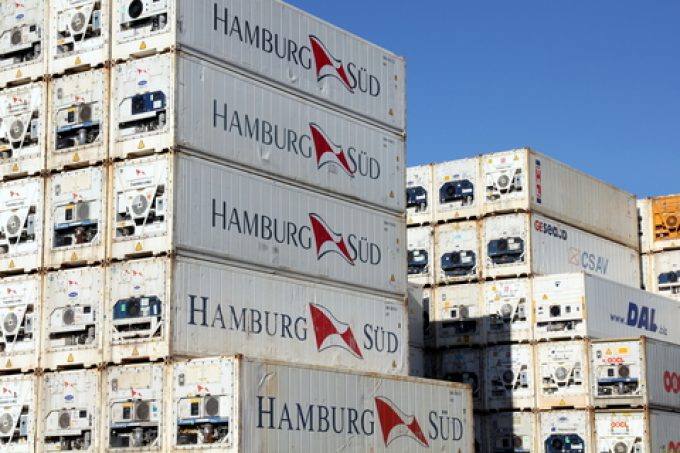Ripples from IT outage could spread through supply chains 'for weeks'
The disruption and delays to air cargo services due to the global IT outage has ...
TFII: SOLID AS USUALMAERSK: WEAKENINGF: FALLING OFF A CLIFFAAPL: 'BOTTLENECK IN MAINLAND CHINA'AAPL: CHINA TRENDSDHL: GROWTH CAPEXR: ANOTHER SOLID DELIVERYMFT: HERE COMES THE FALLDSV: LOOK AT SCHENKER PERFORMANCEUPS: A WAVE OF DOWNGRADES DSV: BARGAIN BINKNX: EARNINGS OUTODFL: RISING AND FALLING AND THEN RISING
TFII: SOLID AS USUALMAERSK: WEAKENINGF: FALLING OFF A CLIFFAAPL: 'BOTTLENECK IN MAINLAND CHINA'AAPL: CHINA TRENDSDHL: GROWTH CAPEXR: ANOTHER SOLID DELIVERYMFT: HERE COMES THE FALLDSV: LOOK AT SCHENKER PERFORMANCEUPS: A WAVE OF DOWNGRADES DSV: BARGAIN BINKNX: EARNINGS OUTODFL: RISING AND FALLING AND THEN RISING

The reefer trade is proving fairly resilient in the downturn, unlike dry cargo container rates, and although reefer freight rates have fallen, they have not collapsed.
Drewry said today that, although it expected a further softening on reefer container rates on east-west trades, it would be “less violent” than in the dry cargo sector.
Moreover, on north-south trades the market was just entering the peak season, which would underpin rates on those services.
The slump in demand for dry cargo containerised traffic means reefer cargo is back in demand on liner services, to the detriment of conventional reefer-vessel operators.
According to Drewry’s annual Reefer Shipping Market Outlook report, although growth in the sector is forecast to be flattish again this year, with an increase of just 1.1%, seaborne reefer trade is expected to expand in 2024 and 2025, to top 4%.
Drewry said last year the estimated total for reefer trade was 138.6m tons, with shipments of meat remaining the largest commodity, accounting for 22%, followed by bananas at 15% and fish at 14%.
According to Philip Gray, who heads Drewry’s reefer shipping research arm, reefer equipment is now more readily available in demand points as the dry cargo container sector has stalled.
“As we see the easing of the situation and as dry cargo freight rates have plummeted out of Asia, obviously moving empty reefer boxes out is much easier these days, and that, of course, means a lot of things get unstuck and we see more availability of equipment worldwide,” said Mr Gray.
Container reefer rates may be softening, but they are still giving carriers a good return relative to current dry cargo rates.
On one of the busiest reefer trades, from Europe to China, Xeneta’s benchmark index for spot and long-term contract rates has stabilised at between $4,250 and $4,500 per 40ft, after spot rates spiked to $5,500 in the middle of last year, when supply chain congestion was causing severe delays to shipments.
Meanwhile, the unwinding of supply chain congestion and freeing of reefer plug capacity on containerships will put further pressure on the ageing specialist reefer fleet, which, until the middle of last year, had enjoyed strong demand. Indeed, with sky-high dry cargo container rates from China to Europe and the US, carriers were more interested in repositioning their empty boxes back to Asia than accepting bookings for reefers.
Furthermore, plug-in points on the quayside at Chinese ports were in very short supply, often obliging carriers to abandon reefer containers at an alternative port.
However, as demand and dry cargo container freight rates have slumped, ocean carriers have renewed their interest in the sector, endeavouring to maximise revenue on backhaul voyages to mitigate the headhaul rate crash.
And there is more bad news for the specialist reefer carriers, as they look set to become less competitive, from the IMO’s tougher environmental CII (carbon intensity indicator) and EEXI (energy efficiency for existing ships) rules. These will force the elderly conventional reefer fleet to slow to speeds that may not meet market requirements for perishable goods.
Comment on this article